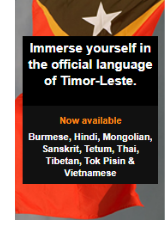A program that brings teachers from Saudi Arabia into Australian schools needs to be carefully executed, but done correctly it will bring benefits to both countries, Gus Olwan writes.
In 2019, four universities in Australia – Monash, Melbourne, Queensland, and Griffith – were successful bidders to deliver the Building Leadership for Change through School Immersion (BLCSI) program for the Saudi Ministry of Education.
The BLCSI is a one-year teacher professional program designed by the Ministry of Education in Saudi Arabia. Delivered by the four universities, it has greatly contributed to the vision and strategy of the Ministry of Education in advancing the knowledge of and transforming the practice of Saudi education professionals through university-guided immersion in Australian schools.
The long term purpose of this transformation in the Saudi education system according to its former education minister is to change the philosophy of education from teacher-based instruction to student-centred instruction. This is a departure from the traditional way of teaching and learning to more sophisticated engagement with students in the classroom.
While education in Saudi Arabia is a key pillar for the success of the Kingdom’s Vision 2030, questions have been raised about the extent of the program’s success.
When considering the capacity of this program to achieve its desired outcomes, policymakers from both countries should assess two things.
First, all stakeholders should monitor how successful they have been in accommodating and integrating people from different cultures into an entirely different environment and education system as teachers.
Accommodating cultural diversity in the classroom will require Australian schools to incorporate cultural awareness from school administration, teachers, and students during school immersion.
An example of how cultural diversity can enhance the program at schools is that by meeting Australian teachers and students, the Saudi teachers will be able to appreciate more deeply the differences in individuals. These differences can range from gender, age, education background, level of expertise, social status, ethnicity, and faith.
The second is to ensure quality assurance in the program’s delivery for both the teachers and schools to ensure the long and sustainable success of the universities’ programs. The professional development and assessment of Saudi teachers should take place on a regular basis to ensure that the program is delivering its promised outcomes for teachers and for schools.
This kind of continuous judgement of the programs’ operational effectiveness offered by the four universities leads to focused improvement, and these results should help to enhance the ability of these universities to best serve those Saudi teachers. That said, professional development provided by universities has to be supported by hard research, instead of anecdotal case studies or untested theories.
Modelling immersion practices at schools can be a complex process because it requires a high level of teacher skill. For instance, mentors assisting and monitoring the program are required to develop ways to further integrate technology into the instructional experience and to ensure that Saudi teachers build the capacity to use these technical skills effectively, even while supervising day-to-day teaching and learning activities.
Final assessment of the program for teachers includes a so-called capstone project – a method to demonstrate the Saudi teacher’s improved professional outcomes from the program.
The question then for policymakers is how indicative or reflective is success in a capstone project of successful development? If this can be assured, the program surely has a bright future.
Governance of the program at the Ministry of Education in Riyadh is perhaps the greatest challenge for Saudi Arabia to ensure that the program is moving forward according to plan. One possible way to determine such a move is to create a performance management framework.
Such a framework could pay attention to two levels of governance. The first is the goal of results-based service delivery. The ministry should focus on achieving empirically better results in key service delivery areas for the benefit of the Saudi teachers.
T he second is policy outcomes more broadly. In this case, the education system is assessed overall to build a case for the amount of quality teaching gained for Saudi Arabia out of the BLCSI program. This would have to be done over a long period of time through a lengthy performance examination of schools in Saudi Arabia whose teachers took part in the BLCSI program. This approach will give policymakers a sense for whether program is achieving its goals and pave the way for adjustments and developments as a result of the assessment-based results.
he second is policy outcomes more broadly. In this case, the education system is assessed overall to build a case for the amount of quality teaching gained for Saudi Arabia out of the BLCSI program. This would have to be done over a long period of time through a lengthy performance examination of schools in Saudi Arabia whose teachers took part in the BLCSI program. This approach will give policymakers a sense for whether program is achieving its goals and pave the way for adjustments and developments as a result of the assessment-based results.
Ultimately it is the shared responsibility between the Ministry of Education in Saudi Arabia and the Australian universities to ensure that success can reach its desired outcome, but if these sensible steps are taken to assure the quality of this program, few would doubt its potential to provide value.





 Is Singapore the world’s education laboratory?
Is Singapore the world’s education laboratory?
 Tackling Saudi Arabia’s economic diplomacy challenges
Tackling Saudi Arabia’s economic diplomacy challenges
The value of collaboration in education is also one of the 21 st C skills. It is important to practice it.
Many thanks Dr. Gis Olwan.